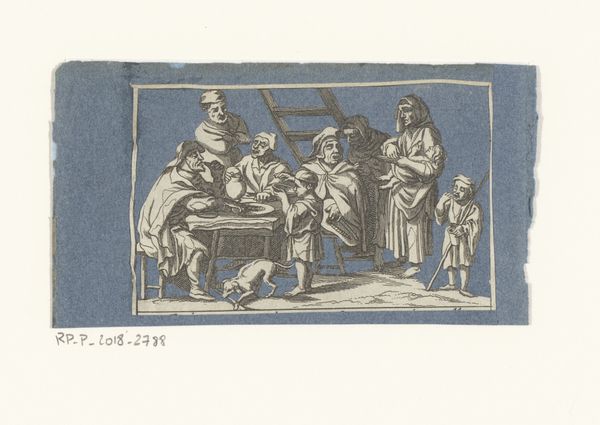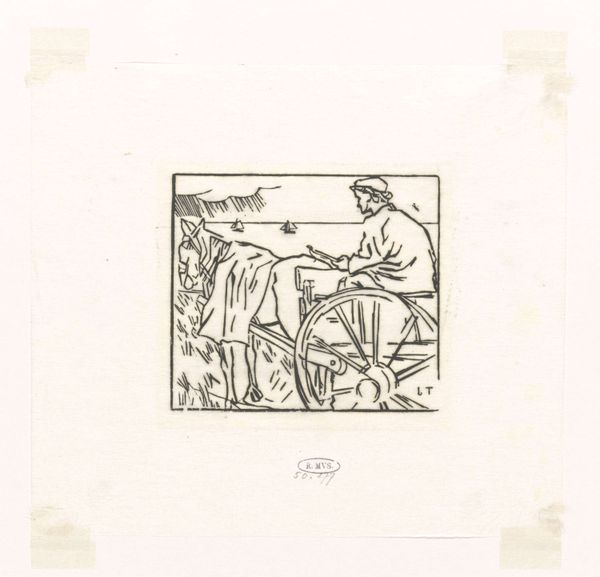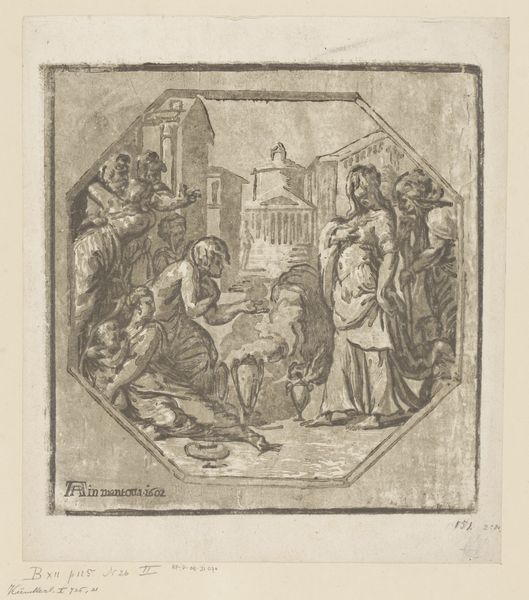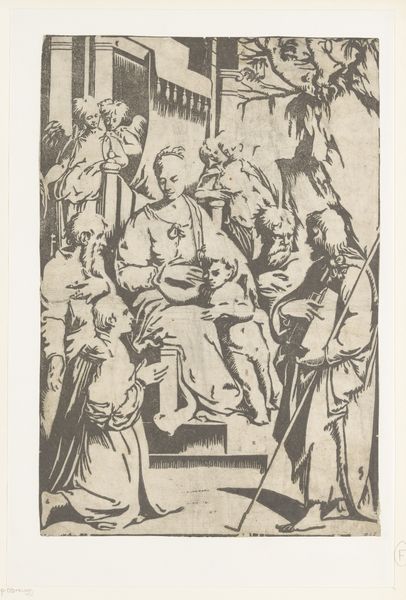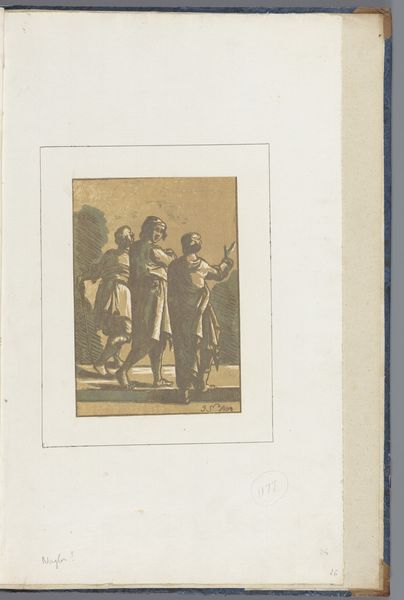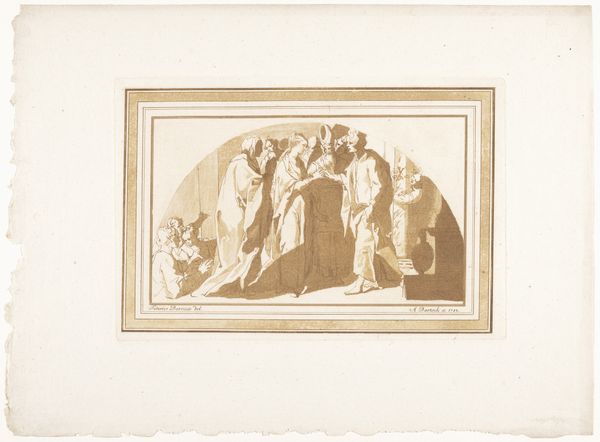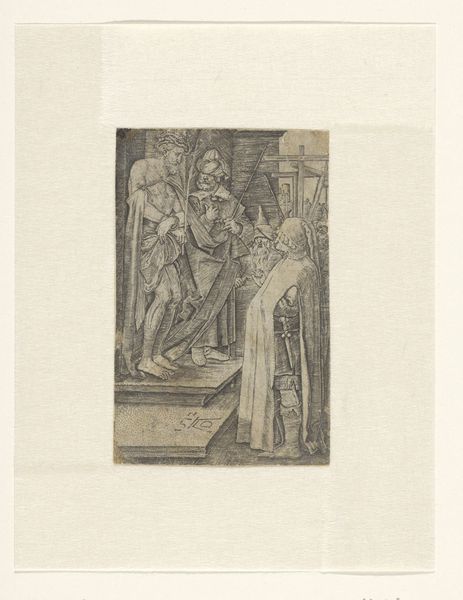
Fragment van een collage van uitgeknipte prenten, geplakt op blauw papier c. 1680 - 1720
0:00
0:00
drawing, print, paper, ink, engraving
#
drawing
#
blue ink drawing
#
baroque
# print
#
old engraving style
#
paper
#
ink
#
ink colored
#
sketchbook drawing
#
genre-painting
#
history-painting
#
engraving
Dimensions: height 83 mm, width 120 mm
Copyright: Rijks Museum: Open Domain
Editor: Here we have a fragment of a collage made from cut prints and glued onto blue paper, dating from around 1680 to 1720, by various makers. The composition feels very staged to me. What structural elements stand out to you? Curator: The application of stark lines against the uniform blue field immediately seizes my attention. Notice the deployment of linear perspective. The figures are meticulously arranged. It's less about what the scene depicts and more about how these disparate elements are synthesized into a unified visual experience. The formal properties, the pure line and shape relationships, hold precedence. Editor: So, it's about how the image is put together rather than what the image represents? Curator: Precisely. Deconstruct the visual mechanics at play: line, form, space, colour, composition. Consider the relationship of positive and negative space. How do these principles function together to give structure? Editor: I see what you mean. It’s less about storytelling and more about the visual equation, I guess? What is that supposed bar at the middle of the collage? Is it simply dividing the different elements, is that line there to serve a structural function, or what? Curator: The image plane establishes visual relations, whether dividing or connecting, thereby articulating a spatial system. The presence or absence, even the texture of line introduces relational interplay. Editor: So by that interpretation of form, even "mistakes" become part of the form in some way? I never thought to look at it that way. Thanks! Curator: Yes, the appreciation resides within these very tangible elements. The emphasis falls squarely on the artwork's self-contained world of formal relations.
Comments
No comments
Be the first to comment and join the conversation on the ultimate creative platform.
